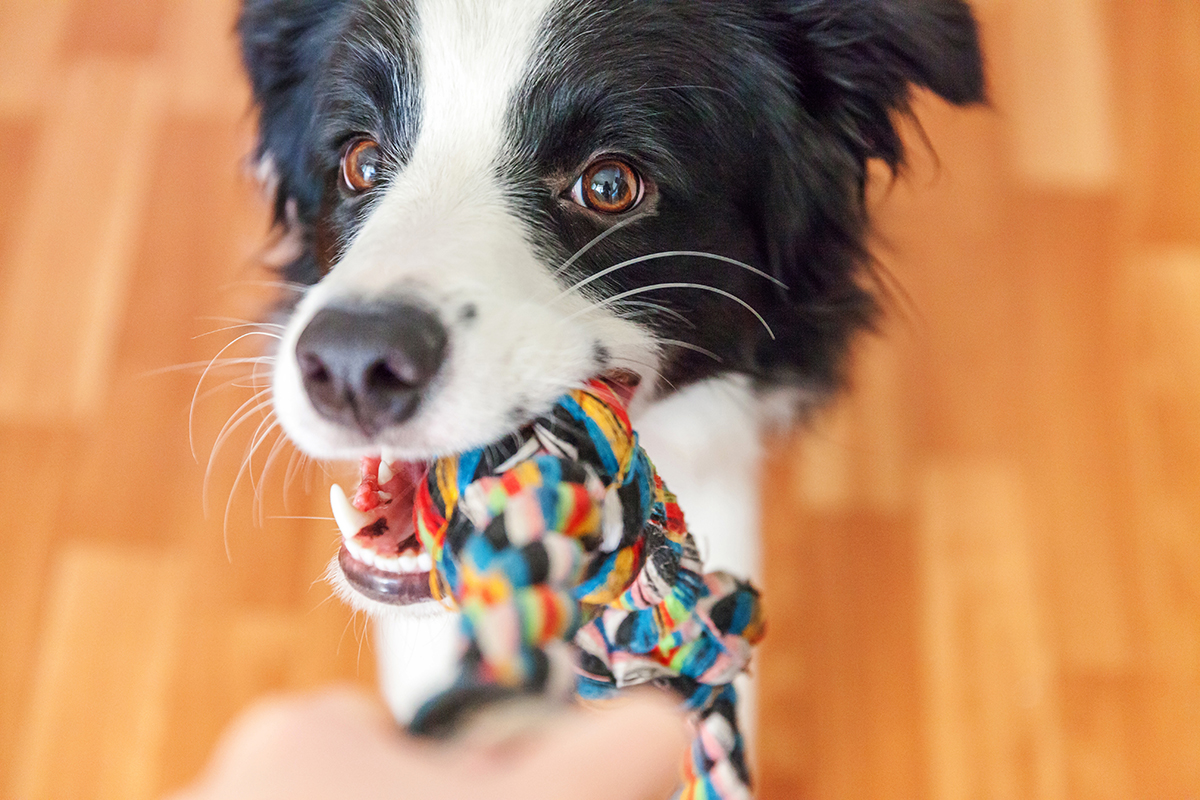
A newly released paper (July 2022) reveals an extremely interesting link between “giftedness” and playfulness in border collies.
In the paper, “A comparison of personality traits of gifted word learner and typical border collies” (click here to read the paper), the authors define “giftedness” as the ability of a dog to learn the names of many different items – usually toys. The following video shows a border collie, Bear, and his owner on This Morning. Bear has learned the names of 80 toys!
Amazing!!
However, whether dogs that learn the names of toys are more playful BECAUSE their owners have taught them to play with toys rather than know more toys because they are playful is another matter….???
The main takeaway from this interesting study is that playing with border collies and using toys to motivate and reinforce them is one of the best ways of teaching them new behaviours during training. This is why I work on teaching owners to play with their collies, especially if they are puppies, and to use their toys as another means of rewarding them during training.
The only downside of using toys in training is that they tend to make the dog incredibly aroused, as you can see in the video above. Bear is like a coiled spring and is vocalising because he is so excited. This can be good when you are teaching certain behaviours, but is much less desirable when teaching others. And can mean that when we are trying to reward dogs in a behavioural training plan, when arousal is often high, using toys would not be a good idea. In these situations there are other rewards that are more suitable, often treats, because sniffing and eating bring arousal levels down, but there are other rewards that we can use if needed.
As in all aspects of training, the types of reward used depend on:
- what the dog finds rewarding in that situation
- what behaviour you are trying to teach
- the arousal levels of the dog
For instance, when trying to teach a dog not to chase wildlife, when the wildlife usually pops up unexpectedly out of the trees or undergrowth next to you, it can be best to use a type of reward that involves chasing, such as chasing a ball or the owner in a fun recall game. However, when trying to teach a border collie not to chase a vehicle, when often a level of fear and anxiety is involved as well, will need something much less arousing. This also usually involves positioning yourself as far away from the vehicle as possible so that the dog can be calmer and not so anxious. You can then use a calming reinforcer such as high-value treats to change the dog’s association with the big, loud, fast vehicle from one of fear to one of eager anticipation.
If you find it difficult to motivate and train your dog or need help in determining what your dog can find motivating in different situations, please get in touch!

